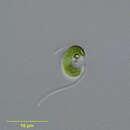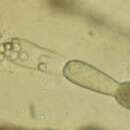Cristian Hutchins
Pages
-
. The Trebouixiophycea is also a group of green algea. Not a lot of research and studies have been conducted but there needs to be more focus on their DNA and more genetic studies as well.
-
-
…
. This caught my attention because Prasinophycea is commonly refered to as green algae. This is classified in the plantea kingdom. Some algae are considered to be in other kingdoms, but this organism is found here. -
. Chlorophyta is more known as the common green algae, not a sub-division of it, just the actual organism. It is classified in the plant kingdom and its lower classification is named Chlorophyceae. The actual name Chlorophyta can be used in two senses.
-
-
…
. Zygomycota is a type of Fungi that is named this because of the spherical shape it has. There are approximately 1060 known species of this type of fungi. Organisms with the Zygomycota trait only make up 1% of true fungis. I found this very interesting and I wanted to know what a true fungi is. -
. Chytridiomycota is a division that originates from the Fungi Kingdom. The root word is greek which in translation means little pots because of the rounded structures and unreleased pores it has. Like all Fungis it breaks down organisms contributing to the enviornment making it a decomposer. The picture made me think and question what it was.
-
. Bacili is a bateria that is taxonomic. They contain many pathogens. It is part of two orders bacillales, and lactobacilales. It is part of many types and classifications of bacteria, but I still want to know more about it.
-
. This type of bacteria is found in Lactic acid. They are profilic in nature and they are found mostly everywhere. In plants, animals, and soil. In real life they are used in the production in fermented food.
-
. This type of bacteria is gram positive. Like many of all the other organisms, there is not a lot of information on it. Kingdom: Bacteria Division: Firmicutes Class: Bacili
-
. Crenarchaeota is a archea that is classified in the Archea kingdom. Originally it was thought to be sulfur-dependent, but later it was found that it was not so. It is one of the most abundant archae in the marine enviornment. I found it interesting that it has such a great abundance of food.
-
. This organism is found in the plant kingdom and it is also classified as an algae. Beforehand, it was sorted into the Pycnococcaceae division, but studies show that it should have been given its own class in itself.
-
. This organism (Unlike other fungis) is classified as a fungus. It is one of the eight currently recognized phyla of the fungi kingdom. They are found in places such as water, ponds, marshlands, and in soil that is near a fresh water source. It decays matter. The picture intrigued me so I chose it because of this
-
. In greek, Protostomia means mouth first, they are a clade of animals that include deuterostomes and a few larger phyla. They usually consist of having three germ levels and are a part of Bilateria.
-
. This organism has only been proposed by a scientific organization in 2008. It belongs to the Archae kingdom. There is no picture, so naturally I wanted to know and find what it looks like,
-
. This organism is a type of archea. It is an order of Thermoprotei. Scientists have not researched this organism thouroughly because they're is not a lot of information on this subject.
-
. Chlorodendrophyceae is yet another class of green algae also classifed in the plant kingdom. It is most commonly found in fresh water, unlike other underwater plants. Its higher classification is called Chlorophyta.
No other collections are associated with this one. You can click on the "associate" button on other collections to have them appear here.














